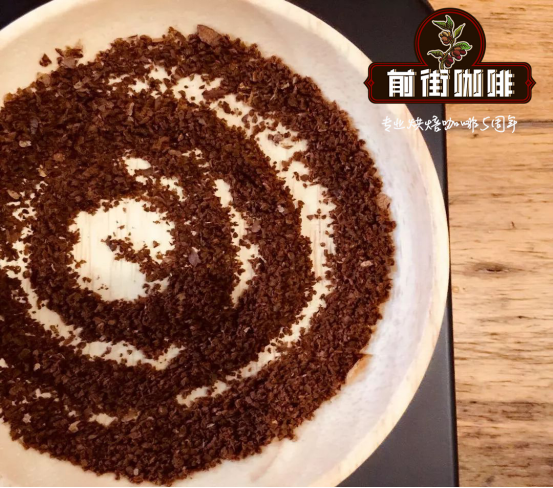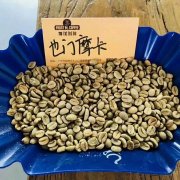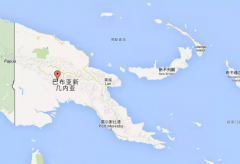Southeast Asian Coffee Vietnam's Geographical Features and Coffee Origin and roasting
Historically, Vietnam was one of the most important coffee growers and today is the second largest coffee producer in the world (after Brazil), a fact that surprises most coffee consumers.
The history of coffee in Southeast Asia dates back to Dutch and French colonialism in the 18th and 19th centuries. Around 1890, the French established a thriving coffee industry in several parts of the Annam region, a mountainous plateau spanning several countries. Laos and Cambodia may have been earlier participants than Vietnam in terms of coffee. Vietnam eventually became a major producer of coffee in Southeast Asia.
Vietnam and Southeast Asia have fascinating terrains. The location of the mountains is roughly in the same direction as the prevailing wind. There is a north slope, the climate is completely different from the south slope, and there is a wide altitude area suitable for growing different kinds of coffee. Because of this, almost all types of coffee can be grown in ideal or "native" climates up to 3600 feet above sea level. Vietnam's coffee landscape brews six unique varieties and varieties, including Arabica and a "native" sparrow, or Arabica, Robusta, Excelsa (sometimes called Chari), Liberica, Catimor, etc.
First, the topography of the Anamite Plateau is very complex, creating regional microclimates that were observed more than 100 years ago and developed the maximum diversity of bean species and varieties. Coffee comes in two basic ways-single source and multi-source blends. In Southeast Asia, coffee beans come in many varieties, and it seems natural to mix coffee from many origins. Blended bean seeds and varieties are superior in achieving a wide range of flavors, long lasting aftertaste, complex nose, iced coffee performance, overall taste and mouth feel satisfaction.

Over the past decade, South America and other coffee-producing regions have shifted to single-source 100% Arabica coffee, which has limited the taste range and appeal of modern coffee to consumers who prefer blended Arabica coffee. Our own public taste tests show that 70% of consumers respond better to coffee blends, which taste about the same as Robusta and Arabica. Therefore, Vietnamese coffee blends are more attractive than single-source 100% Arabica coffee. Consumer comments usually go something like this: "This is how coffee used to taste!" "I didn't know coffee tasted like that!"
Second, baking preferences established decades ago favor lower temperatures and longer baking processes. What we call dark "French" roast today probably didn't originate from high roasting, but rather a slow and prolonged roasting that resulted in consistent color throughout the beans, darker in color, but without blistering or burning. This distinction is important because many Americans now associate French barbecue with the roast coffee that is common in certain coffee chains. Burning coffee causes the breakdown of sugar and oil, and coffee oxidizes and ferments rapidly once exposed to air. These defects do not appear in Southeast Asian black barbecue, which is relatively stable.
Third, beans are usually baked in so-called "yellow oil," which may or may not be true clear yellow oil. Vegetable oils are occasionally used, and historically, traditional "indigenous" coffee roasting has involved using small amounts of sugar, oil, and vanilla or cocoa powder to create an almost caramel-like coating effect. The coating blackens when baked, and the beans end up almost as a thin, hard shell. Why would you do that? Robusta beans mature particularly slowly in the bush, and pickers usually pick immature beans at the same time as ripe beans. Traditional coatings give all beans a similar color. The presence of some immature beans did not affect the overall taste of the mixture. Modern growers, however, pick only ripe beans, and despite the extra labor required and the lack of such coating during baking, they choose simple oil points to make the beans easy to flip during slow baking.
Important Notice :
前街咖啡 FrontStreet Coffee has moved to new addredd:
FrontStreet Coffee Address: 315,Donghua East Road,GuangZhou
Tel:020 38364473
- Prev

The History of Yemeni Coffee and the Origin of Mocha
Yemeni Coffee's great contribution to world history is best described through its iconic port city of Armah ha. Under the umbrella of the Ottoman Empire, Yemen fine-tuned and carefully protected its precious caffeinated products. Unwilling to sell live coffee plants or seeds, they established a global monopoly on the coffee trade around the sleepy port. Come on.
- Next

A detailed description of the varieties and flavors of Blue Mountain Coffee in Papua New Guinea
Coffee cultivation in Papua New Guinea began with seeds imported from Jamaica's famous Blue Mountain region in 1937. This tradition has not disappeared in today's Papua New Guinea coffee, and its flavor characteristics still show similarities with old-fashioned Jamaican Blue Mountain coffee. Coffee plant varieties grown in New Guinea include Blue Mountain Coffee (Cofea Arabica var.Blue Mountai)
Related
- Beginners will see the "Coffee pull flower" guide!
- What is the difference between ice blog purified milk and ordinary milk coffee?
- Why is the Philippines the largest producer of crops in Liberia?
- For coffee extraction, should the fine powder be retained?
- How does extracted espresso fill pressed powder? How much strength does it take to press the powder?
- How to make jasmine cold extract coffee? Is the jasmine + latte good?
- Will this little toy really make the coffee taste better? How does Lily Drip affect coffee extraction?
- Will the action of slapping the filter cup also affect coffee extraction?
- What's the difference between powder-to-water ratio and powder-to-liquid ratio?
- What is the Ethiopian local species? What does it have to do with Heirloom native species?

